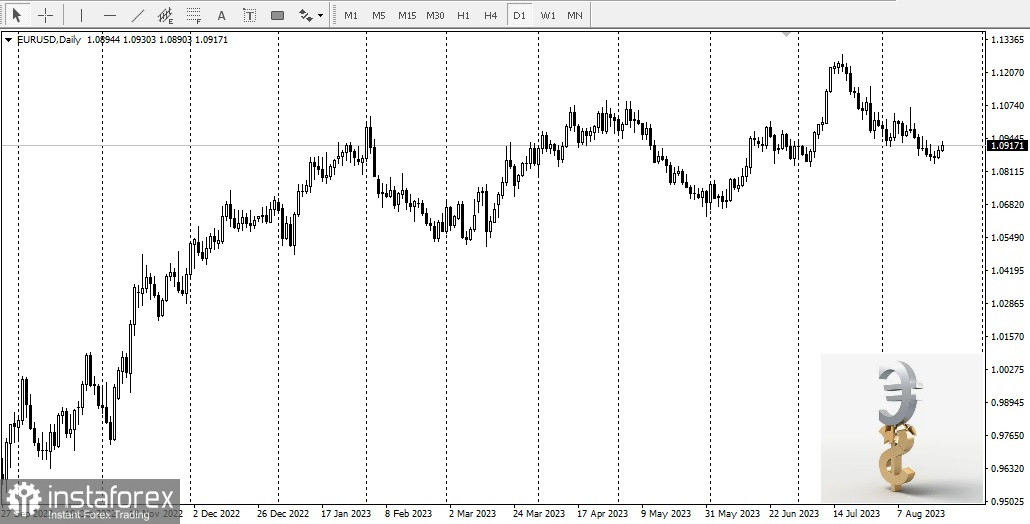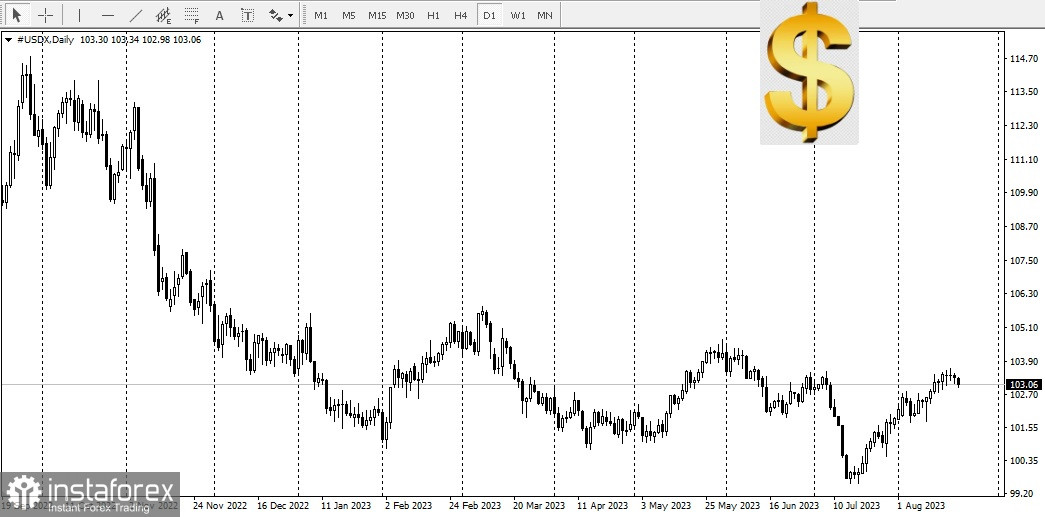
The EUR/USD currency pair is gaining positive momentum for the second consecutive day, staying above the 1.0900 mark. On the euro side, relying on recent statements from the European Central Bank's Chief Economist, Philip Lane, the Eurozone economy will continue to grow and is unlikely to fall into a recession. This leads to a narrowing of the inversion of Germany's yield curve and supports the prospects for further ECB policy tightening.

In addition, some two-day weakness in the U.S. dollar gives the EUR/USD pair a tailwind toward the euro. As traders await the Federal Reserve to halt its rate hike cycle in September, the U.S. dollar index, which tracks the U.S. dollar against a basket of currencies, remains below the highs reached during the summer months.

However, incoming U.S. economic data still points to a stable economy and suggests another rate hike of 25 basis points by the end of the year, which should help limit any significant losses in the U.S. dollar. If the Federal Reserve continues to hold interest rates at a higher level for an extended period, it will also benefit the yields on U.S. Treasury bonds. It is worth noting that on Monday, the yield on 10-year U.S. government bonds rose to a new 15-year high.
Likely, ahead of the speeches by Fed Chair Jerome Powell and ECB President Christine Lagarde at the Jackson Hole symposium on Friday, investors may prefer to stay on the sidelines. Also, attention should be paid to the flash versions of the PMI reports for the Eurozone and U.S., which will be released on Wednesday. This will give a fresh perspective on the state of the economy and whether the respective central banks can afford further interest rate hikes.
Today, during the U.S. session, attention should be paid to data on U.S. existing home sales. Today's news, along with the yield on U.S. bonds and broader risk sentiment, will impact the dollar's price dynamics and create short-term trading opportunities for the EUR/USD pair.
 English
English 
 Русский
Русский Bahasa Indonesia
Bahasa Indonesia Bahasa Malay
Bahasa Malay ไทย
ไทย Español
Español Deutsch
Deutsch Български
Български Français
Français Tiếng Việt
Tiếng Việt 中文
中文 বাংলা
বাংলা हिन्दी
हिन्दी Čeština
Čeština Українська
Українська Română
Română

